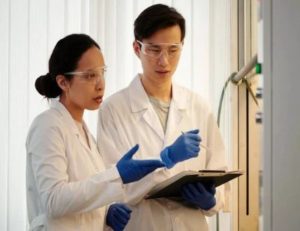
Washington [US], June 21 (ANI): Researchers looking at early human embryo gene activity data have uncovered a previously unknown type of cell that self-destructs days after formation as a quality control measure to safeguard the growing baby.
The research provides new information on what occurs in the very early stages of life following fertilisation, which has the potential to enhance IVF and regenerative medicine procedures in the future.
According to a recent study by an international team of academics, including scientists from the University of Bath, our initial development in the womb may differ from what we previously believed.We all began as just one cell, the fertilised egg, even though adult humans are made up of trillions of cells. This divides into two cells, which divide into four cells, which divide into eight cells, and so on. The cells eventually begin to specialise in their purpose. Some will be diverted to become the placenta while others will become the embryo, like trains diverted to various end stations.
The team of scientists analysed previously published data on gene activity of each individual cell from 5-day old embryos and discovered around a quarter of the cells didn’t fit the profile of any of the known cell types (pre-embryo, pre-placenta etc).Investigating further, they discovered that these cells contained so-called “Young transposable elements” or “jumping genes”. These are rogue elements of DNA that can copy themselves and insert themselves back into our DNA, often causing damage in the process.
Staining of embryos by project collaborators in Spain confirmed the existence of the cells with proteins derived from the jumping genes.
Looking a little further forward in time, the team found their descendants both have DNA damage and undergo a process of programmed cell death.
This process, the researchers suggest, looks like a form of quality control: selection between cells in favour of the good ones.Dr Zsuzsanna Izsvak, co-senior author from the Max Delbruck Center and an expert on mobile DNA, said: “Humans, like all organisms, fight a never-ending game of cat and mouse with these harmful jumping genes.
“While we try and suppress these jumping genes by any means possible, very early in development they are active in some cells, probably because we cannot get our genetic defences in place fast enough.”Co-lead author Professor Laurence Hurst, from the Milner Centre for Evolution at the University of Bath, said: “If a cell is damaged by the jumping genes – or any other sort of error such as having too few or too many chromosomes – then the embryo is better off removing these cells and not allowing them to become part of the developing baby.
“We are used to the idea of natural selection favouring one organism over another. What we are seeing within embryos also looks like survival of the fittest but this time between almost identical cells. It looks like we’ve uncovered a novel part of our arsenal against these harmful genetic components.”




 Driving Naari Programme launched in Chandigarh
Driving Naari Programme launched in Chandigarh






























